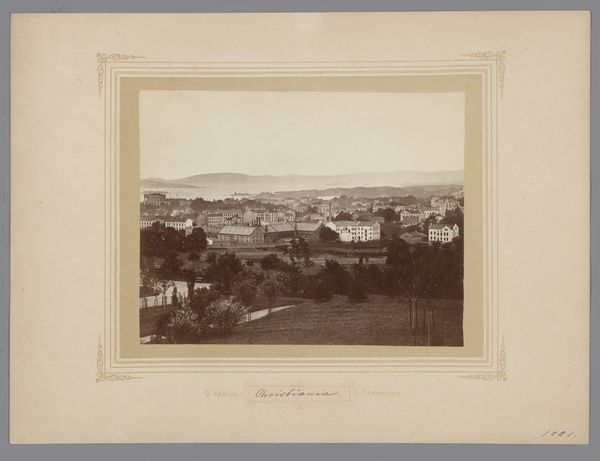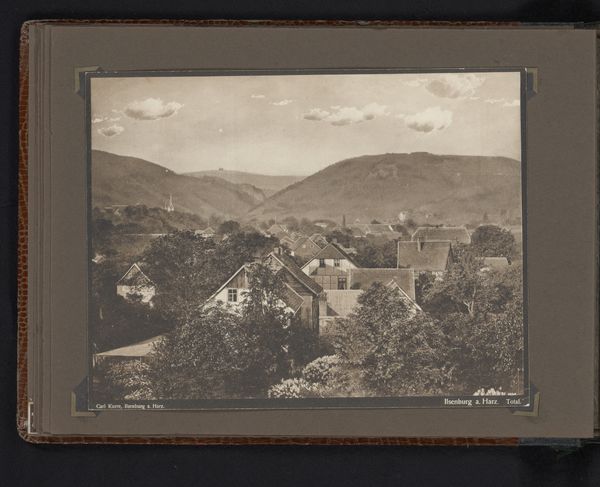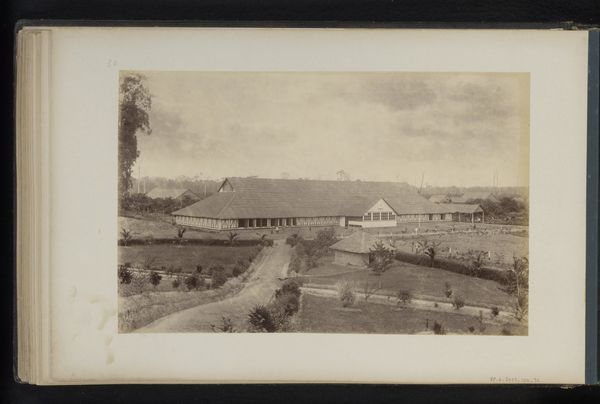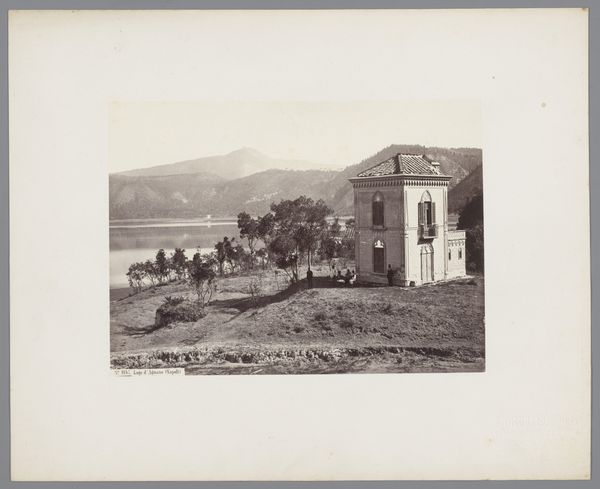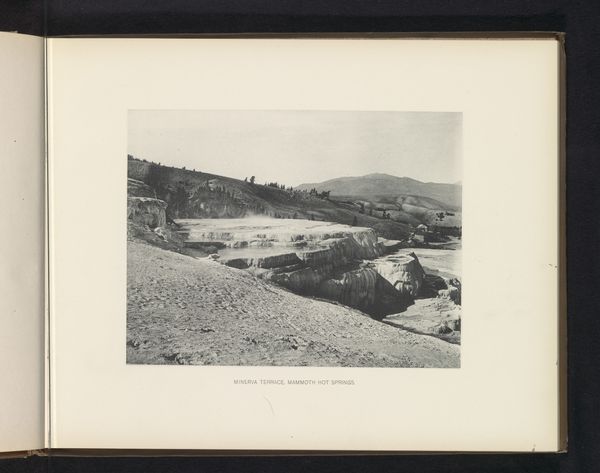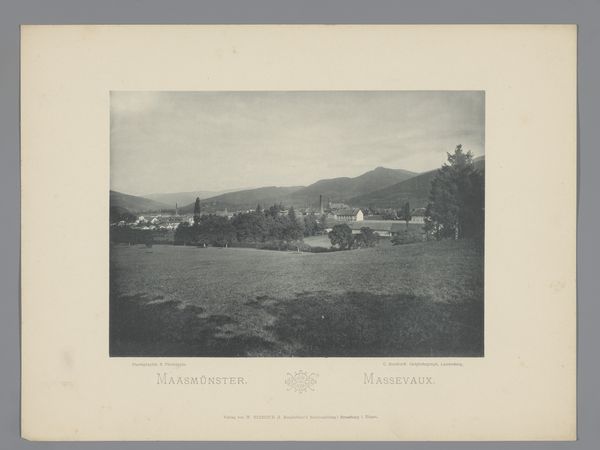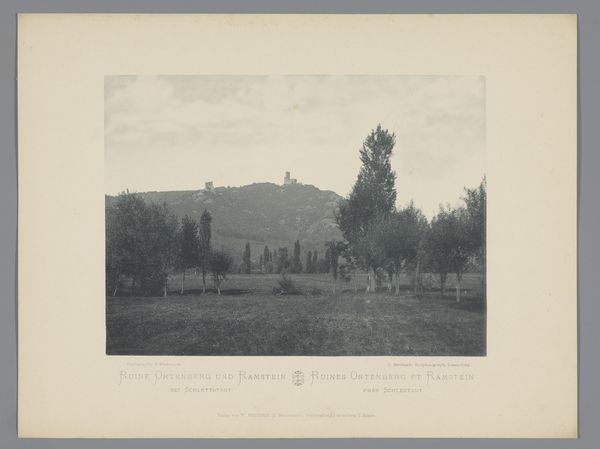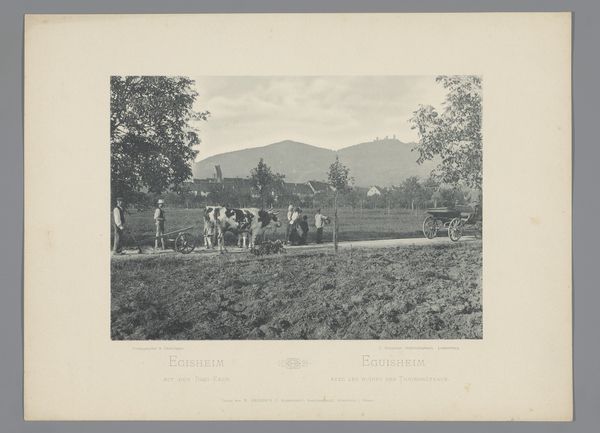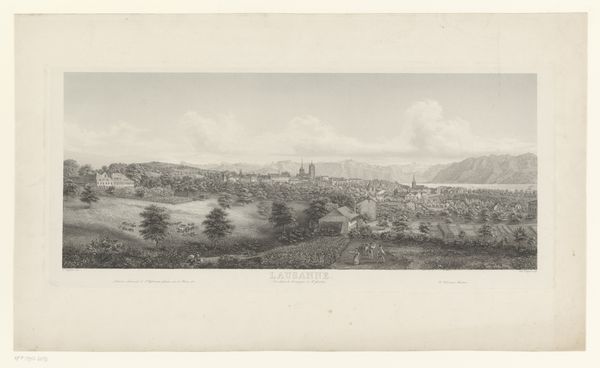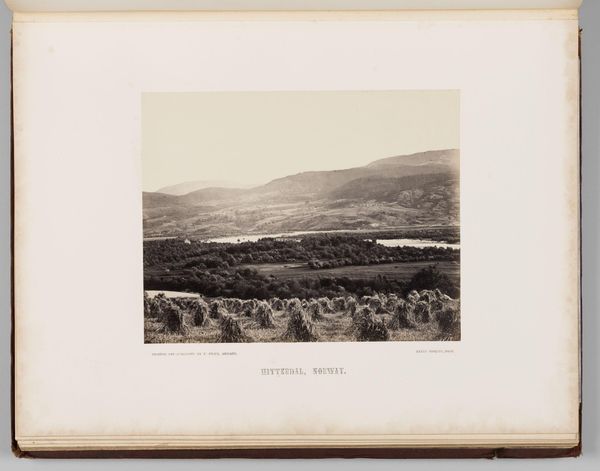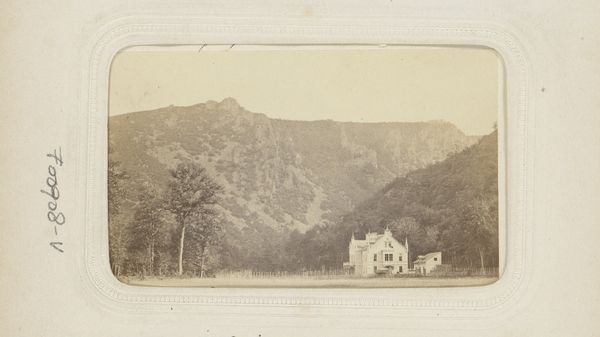
Dimensions: height 114 mm, width 177 mm
Copyright: Rijks Museum: Open Domain
Curator: Let's take a moment with this 1870 albumen print titled "Gezicht op Inverlochy Castle te Fort William" by James Valentine, currently held in the Rijksmuseum. Editor: Oh, there’s a dreamy quality to it! All soft edges and a pale, ghostly light. I feel like I’m peering into a memory, distant and slightly unreal. Curator: Absolutely, and that softness is intrinsic to the albumen process itself. It's created by coating paper with egg white, then sensitizing it with silver nitrate before the image is printed. This lends a subtle warmth and a sense of depth. Editor: The image is quite picturesque with the way that the castle and mountain scene are doubled by reflection in the water, don’t you think? All this natural beauty…I wonder what kind of labor went into preparing the chemicals, making the print? Was it painstaking work, meticulous? Curator: The work required high precision and wasn’t always easy, and yes, there's a dialogue happening between industrial progress—photography—and romantic ideals of landscape, isn't there? A fascination with both controlling and capturing nature's beauty, to give it immortality. Editor: Indeed. Valentine's making an object but documenting a location, a slice of upper-class life available as commodity to view back home. How accessible or how pricey was it for its period? Curator: The democratization of images through photography was underway, and it definitely provided an avenue for people to bring images of beauty back with them. Still, owning original photographic prints marked you as possessing an increasingly sought-after, novel form of documentation. Editor: Thinking about this "democratization," but within economic structures—photography still required specialized knowledge and supplies, thereby reproducing existing privilege even in its widened accessibility, which seems to subtly haunt its seemingly innocent composition. Curator: That makes me consider that "Gezicht op Inverlochy Castle" is more than a scenic view, but a captured, material slice of its own time. Editor: Yes! Each photographic object, just a moment captured—yet materially rooted in larger economic and power dynamics of its making and reception. Curator: It’s amazing to find such different perspectives—from dream to object—within this singular frame.
Comments
No comments
Be the first to comment and join the conversation on the ultimate creative platform.
